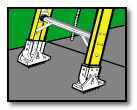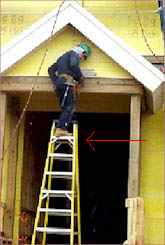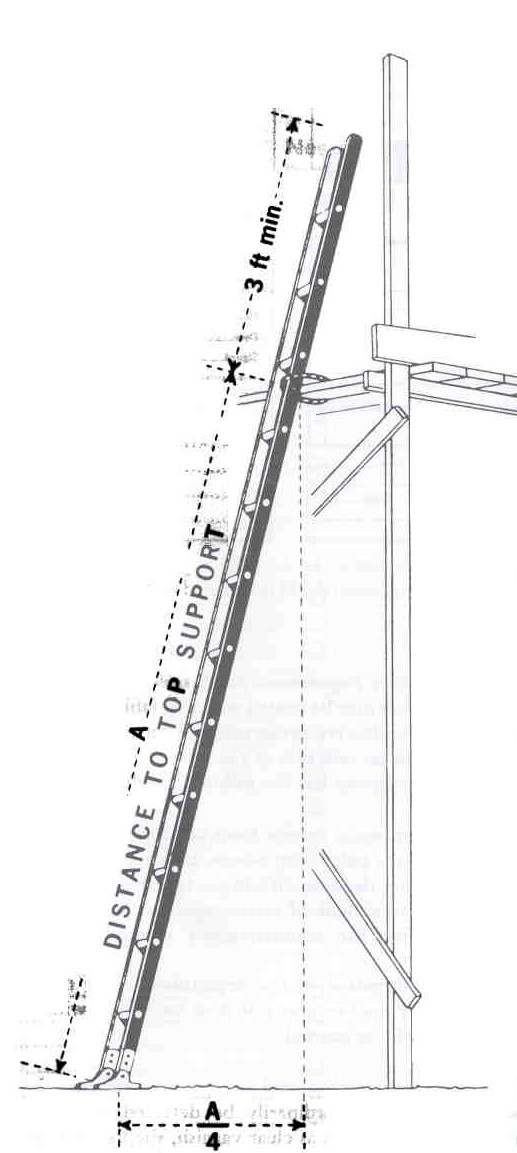UNIVERSITY OF WISCONSIN River Falls
Risk Management
Ladder Safety
Fatalities from falls accounts for about 14% of all workplace fatalities, and
865 deaths in 2022.
Bureau of Labor Statistics , US Department of Labor
It is important to select the proper ladder for the task, setup the ladder properly, use the ladder properly, and store and maintain that ladder for future usage.
Ladder Do's and Don'ts
Ladder Selection
DO
- Select a ladder that's the right height and weight capacity for the job.
- Inspect ladders before use.
- Make sure rungs or steps are in good condition, have non-slip surfaces, and are free of grease and oil.
- Keep metal parts lubricated.
- Check that there are no splinters or sharp edges.
- Check that support braces bolts, screws, etc., are in good condition.
DON'T
- Don't use a ladder for purposes other than getting you to a higher level. Ladders are not platforms, scaffolds, skids, or braces.
- Don't use boxes, chairs, or anything else in place of a ladder.
- Don't use a metal ladder near live electrical wires.
- Don't use a ladder with missing or broken parts.
- Don't use a ladder with worn or frayed rope.
- Don't use a ladder that's been exposed to fire or corrosive chemicals.
Ladder Setup
DO
- Set up ladders on a firm level surface.
- Set ladder feet parallel to the surface it rests against.
- Anchor the ladder top.
- Have the ladder bottom tied or held.
- Extend the ladder at least 3 feet above the top support.
- Angle the ladder so the distance from the bottom to the wall equals one fourth the ladder's working length.
- Position an extension ladder before extending it.
DON'T
- Don't rest a ladder on a window or window sash.
- Don't place a ladder in front of a door unless it's locked or blocked.
Ladder Usage
DO
- Wear shoes with clean, nonskid soles.
- Face the ladder when climbing up or down.
- Use both hands to climb.
- Carry tools up with a rope or belt, not in hands.
- Always keep one hand on ladder while working.
- Keep tools in a holder while working.
- Keep between the side rails while working.
- Move slowly and cautiously on a ladder.
DON'T
- Don't allow more than one person on a ladder.
- Don't climb ladders if you're afraid of heights or tend toward fainting or dizziness.
- Don't move a ladder while you're on it.
- Don't stand more than three rungs from the top of the ladder.
Ladder Storage
DO
- Store ladders in dry, well ventilated areas with moderate temperatures.
- Store ladders either vertically or horizontally with supports at each end and in the middle.
- Identify unsafe ladders with tags.
- Remove defective or unsafe ladders from service immediately.
DON'T
- Don't store anything on a ladder.
- Don't paint wooden ladders with paint, only with clear preservatives, as paint can hide wear on the ladder.
- Do use non-skid feet on ladders

- Never use the top two rungs of a ladder!

To set up a ladder safely, the base should be one-fourth the ladder length from the vertical plane of the top support. Where the rails extend above the top landing, ladder length to the top support only is considered. Tie-off should be adequate to prevent any tipping of the ladder if the climber leans to the side.

Additional Information at the OSHA website
Back to Resources










